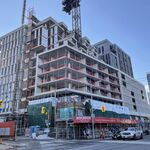TOareaFan
Superstar
Now take the same sentence and reword it around then suddenly a DRL is quite possible...
Even if DRL is privately constructed, any potential gov't transit funding will more than likely be diverted towards a Sheppard extension.
And yeah...while no private investor would be interested in Sheppard, I can see a huge lineup of investors for a DRL, especially if it includes clauses that eliminate the King & Queen Car and replace it with buses. The DRL would actually be a subway that could be built on private dollars with little or no public funding...its ridership numbers today itself are already profitable...
Sure, but any private sector deal to build that profitable line would require that the ridership revenue from that line go directly to the owners. While this makes sense on its own, it breaks the model that all of our public transit systems operate under.....heavily used/profitable lines/service subsidize other lines which generate less cash but are deemed good from a public policy perspective.
If you/we are going to go that route you could just find a way to ring fence the revenues from the Yonge subway do a PV calc and come up with a value of that and sell those revenue streams to the market and generate billions to build whatever you wanted elsewhere.
Keep in mind, however, that is exactly what happened with the 407. The public purse built it for, what, $1.5B then offered it to the market who PV'd the expected revenues and, in an open market, the best offer was around $3B.....today, however, I think you will find that more people are critical of that than are supportive.
The hatred for the 407 deal (which on its own seems, to me, to be a pretty good deal for, both, the investor and the Province) is (IMO) what holds back PPP transactions in this province. The governments are afraid to do a deal that they fear can be painted as a "sell out" later on so they negotiate far too hard for every last penny and this creates an environment where the private sector just see deals with better profit margins elsewhere in the world.




